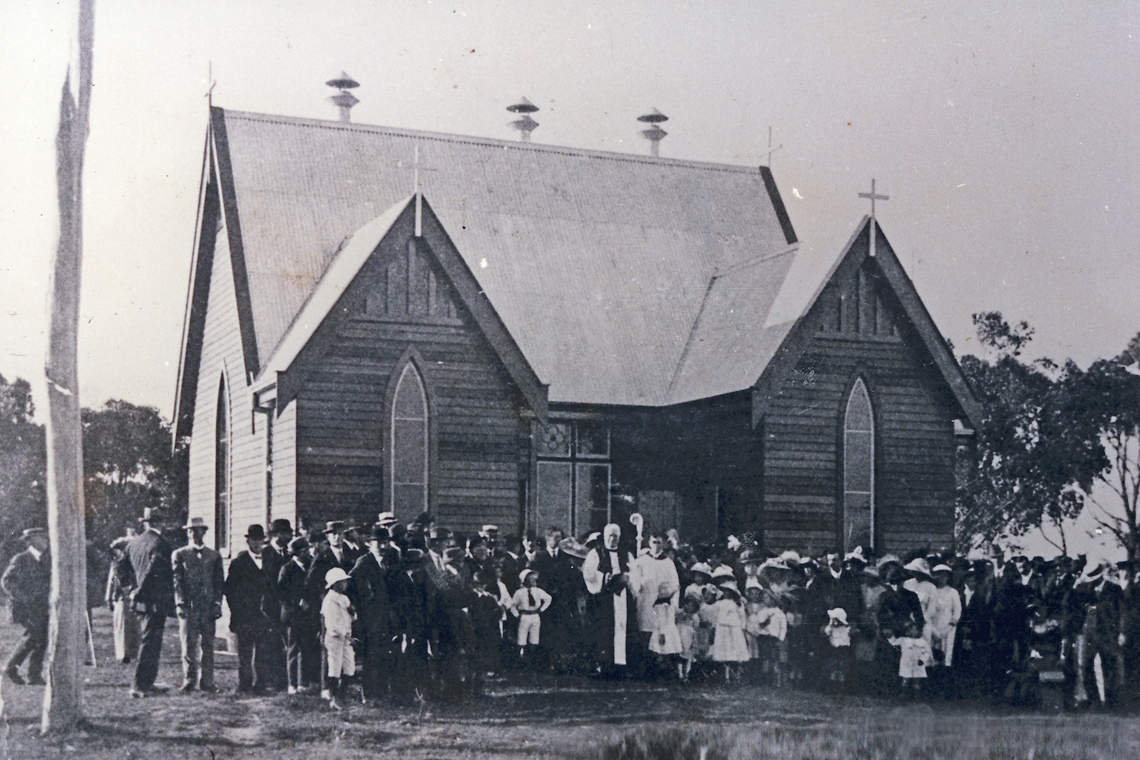
St Mark’s dedication day, 26 April, 1914.
By Ilma Hackett – Balnarring & District Historical Society
A small, white, weatherboard church is overshadowed by old pine trees. It occupies a prominent corner at the junction of Balnarring, Stumpy Gully and the Frankston Flinders Roads at Balnarring. This is St Mark’s Anglican Church. It celebrated its centenary in 2014 and several of the pines that crowd the grounds in front of the church may also have passed their centenary. The oldest were planted in 1918.
A church is built
In the early years of the 20th century Balnarring was a rural community with a population of about 500. It was made up of grazing properties, farms and orchards. It had no centre as such. The central Van Suylen property had been subdivided during the 1890s, and as reported in the Mornington Standard in 1908, “The Balnarring district . . . has changed considerably during the last few years, and been cut up largely into smaller holdings and settlements.” On the corner of Buckley’s Road (Balnarring Road) and the Frankston-Flinders Road there now stood a general store on one of these smaller holdings. Some short distance further north, a Mechanics Institute Hall had been built opposite the school with the sports reserve a little further north from the school. Roman Catholic settlers had built a church on land at the corner of Buckley’s Road and the track that ran from Bittern to Dromana. Those of the Anglican and Presbyterian faiths could worship at the small Union Church that was built at Merricks some thirty years earlier. Here services were held for the two groups on alternate Sundays.
However, Balnarring was growing at a faster rate than Merricks and the Anglicans were looking for a more central location. Land at the tip of the triangle formed by Stumpy Gully Road, Balnarring Road and the Frankston-Flinders Road had been granted to the Church of England in 1868 and in 1912 a Vestry of seven was formed at Balnarring with Thomas Cole as secretary and the Reverend Cyril Eva as vicar. Shortly afterwards the group applied for a grant to help build a church at Balnarring. The simple, rectangular, weatherboard construction with its steeply pitched and gabled roof was completed two years later. An unusual feature was its twin porches on one long wall. One was the entry porch; the other, the vestry. The dedication service was held on April 26th, 1914.
Two months later, in a distant European country, the heir-presumptive to a foreign throne, and his wife, were shot dead during a state visit. Europe was plunged into chaos and another two months on Australia found itself involved in a war that would be long and bloody. Britain had declared war against Germany and, so, member countries of the British Empire also found themselves at war. Including Australia.
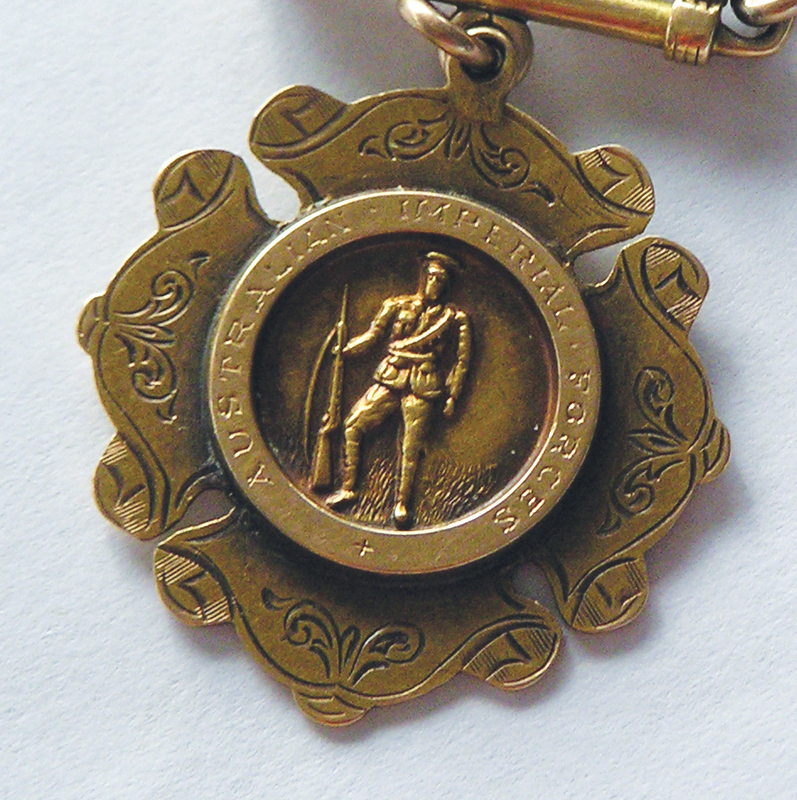
Ron Stone’s gold medallion presented on his return.
“For King and Country”
Young men from the district began to join the Australian Imperial Forces; they enlisted for “King and Country”. Some joined because friends and brothers were going. Three of Jim and Euphemia Cavanagh’s sons joined up, two boys from the Myers family and two of the Stone brothers. Some possibly went for the adventure but most felt a duty. Farm labourers, a blacksmith, a groom, a baker, became soldiers. Vic Ford was just eighteen when he signed up, as was Ron Stone. Ernie Warnecke was a year older when he enlisted in 1917. He died that same year – not on the battlefield, not overseas. He caught meningitis at the Recruits Depot and died in the Fairfield Hospital. Most were young men and unmarried but there were one or two who left a wife behind. As each man went away he was given a public farewell by the community in the local hall.
They were sent to all the main theatres of war. To Turkey and Gallipoli – Private Ben Hintze went missing in the chaos of the landing. His family spent months trying to find news of him. “Missing in action”, until that final letter from his sergeant; “Killed in action”. Private Fielding survived Gallipoli but died in an Egyptian hospital from pneumonia. Graham Myers spent long months gravely ill in a British hospital when he caught influenza while serving in France. He was one of the many Balnarring young men who experienced the horror of the Western Front. Myers came home. John Cavanagh did not. Lance -Corporal Berryman saw action in Palestine, where he died whilst on a reconnaissance mission. Seven of those young men who went from the Balnarring area did not return.
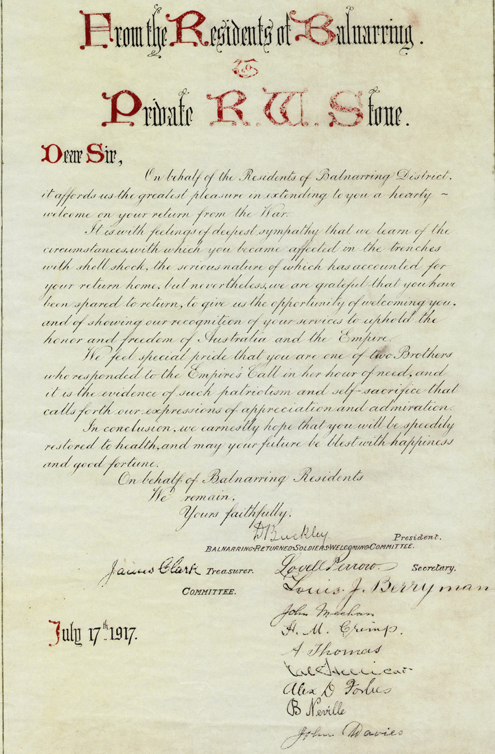
Ron Stone’s Welcome Home certificate.
The Home-coming
Each of those who did return was given a joyous, public ‘Welcome Home’ organised by a special committee of the Balnarring Progress Association. The women decorated the hall with greenery and flags for each home-coming. There were speeches, an official presentation and a concert followed by supper and a dance. The official presentation consisted of a framed Address of Welcome Home, beautifully hand-lettered on parchment, and an inscribed gold medallion. Money raised from these Welcome Home celebrations went towards the purchase of an Honour Board to occupy pride of place in the Balnarring Hall. This was unveiled, on 26th November, 1920 by Major Balmain, career soldier and owner of Coolart. Major Balmain was a British officer who had been with the 15th Kings Own Hussars. He came to Australia as an aide-de camp to the Governor General in 1904 where he married Alison, the daughter of George Fairbairn. Fairbairn purchased the Coolart Estate as a wedding gift for them. When war broke out Balmain had rejoined his regiment and fought with distinction on the Western Front. The committee decided it was more appropriate to present him with a gold-mounted walking stick with an additional gold band, suitably inscribed, instead of a medal, but of equivalent value.
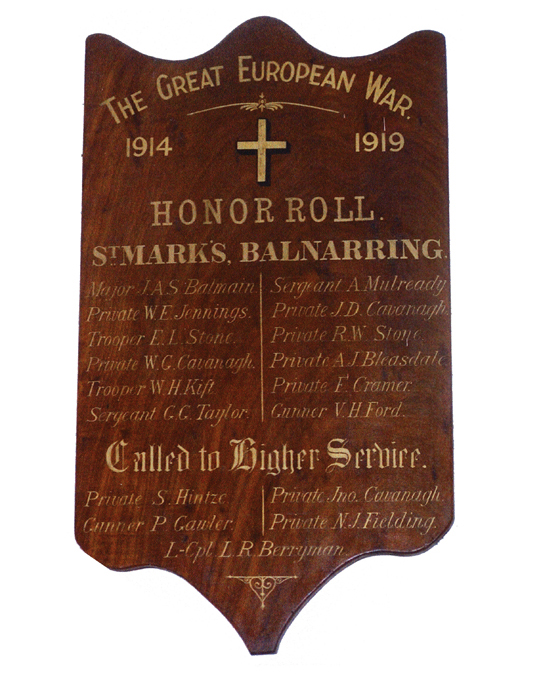
World War I Honour Board, in St Mark’s Church.
Honour Boards and memorials
St Mark’s church also organized an Honour Board with the names of the men from its congregation who had enlisted in the war. It hangs there today honouring the seventeen men, including Major Balmain whose family had been benefactors of the new church. His father-in-law, as a Peace Offering when the war ended, wrote off the church’s debt to him, money he had loaned the church when it was being built. Balmain’s name had been omitted, at his request, from the board designed to hang in the Balnarring Hall. That was for the enlisted men. Twenty-six names were on that board which was made of treated mountain ash, designed and made by Robert Prenzel of South Yarra. It was the committee’s second choice of design as the first was too big for the number of names submitted. The board was ordered to be completed by 25th October 1920 and delivered to the railway station at Bittern. The total cost was £30/-/-.
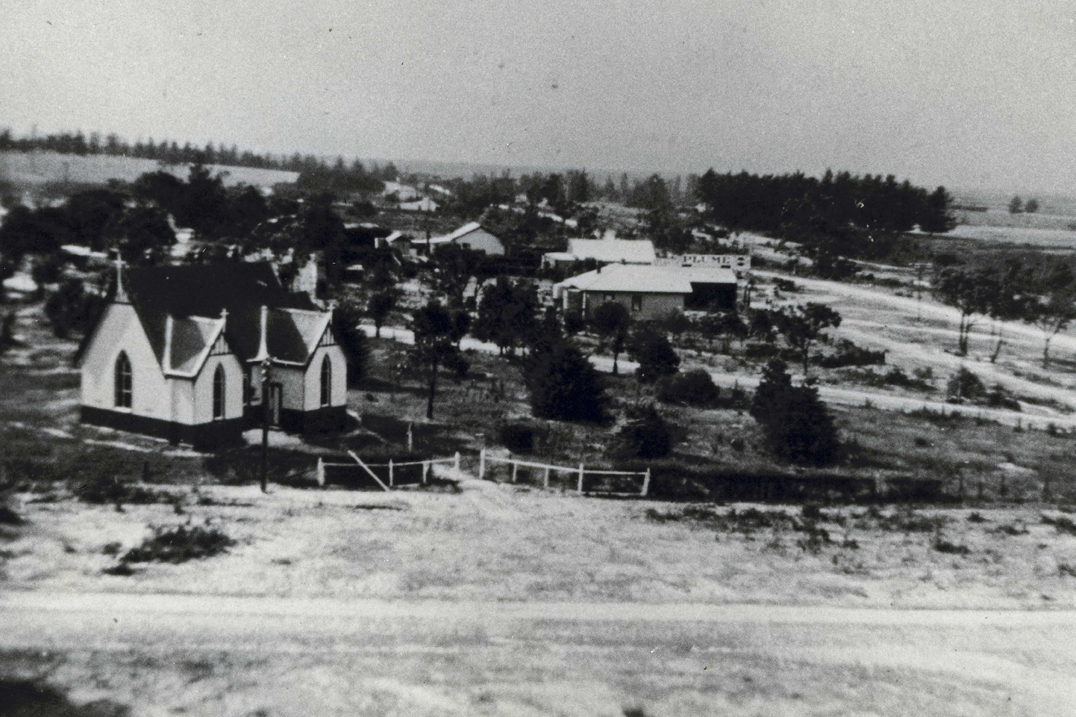
St Mark’s corner, 1930.
Peace Celebrations saw Balnarring combining with Bittern to hold a Sports and Picnic Day at the Balnarring Sports Reserve with refreshments provided in the Mechanics Hall opposite. A general celebration of the end of the war. Later the Progress Association obtained a Trophy Gun, a small machine gun that was mounted on the edge of the stage in the hall. (At the beginning of World War II this was confiscated, as was the old duelling pistol that was also on display.)
There was no town square in Balnarring, no focal point where a cairn or other public memorial might be erected. Nor were trees planted to form an Avenue of Honour anywhere along one of the roads that passed through the district.
St Mark’s trees
However, the members of St Marks church decided to plant memorial trees at the front of their church. Church records show that thirty-three ‘ornamental’ trees were ordered from the State Nursery, one for each man from the district who had served in the war. These were duly received and working bees held to prepare the land and then plant the trees. But were the trees, in fact, pine trees? Miss Cole recorded in her small history of the church that the memorial trees did not include the cypresses planted along the front fence which were put there at a much later date. Enquiries brought differing opinions. A spokesperson from the National Trust Heritage Trees said pines could be classed as ornamental trees; others said European trees were more common. No-one who grew up in the Balnarring area remembers trees other than pines being around the church.
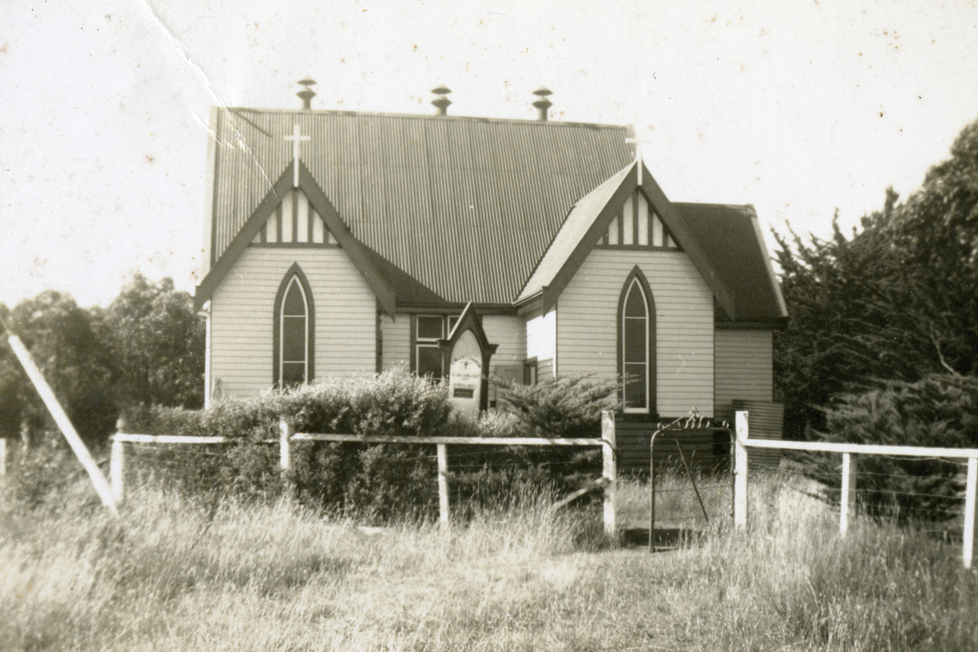
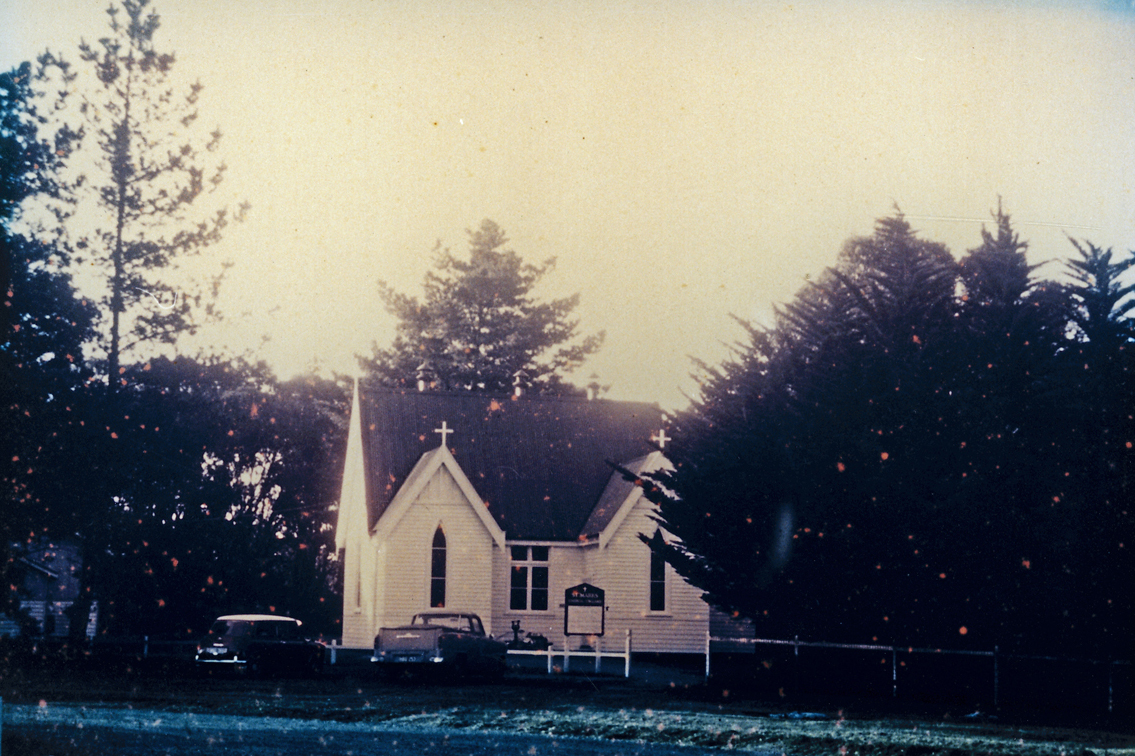
St Mark’s 1946 (left) and St Mark’s 1969 (right).
Today it is difficult to pinpoint just which trees are the original trees. There have been several attempts to identify the oldest trees in order to attach a name to each. Margaret Hindson a member of the both the Balnarring Historical Society and the St Mark’s congregation undertook research work. It was not an easy task. The names on the Honour Rolls together with the names of those given a Welcome Home as recorded in the Progress Association Minute Books totalled more than the thirty-three specified by the church records. And what of someone like Corporal Taylor? An Englishman, he had been working as a groom at Coolart when he enlisted. He did not return to Australia after the war but remained in England when discharged, leaving a ‘wife’ and child behind in Balnarring. Yet Taylor’s name is on the Honour Board. There was also the problem of those whose names appeared on other Honour Boards within the wider Balnarring district. Were they among the thirty -three counted?
A Lone Pine replacement
The ageing pines present a problem. Their life span is finite. They will fall or need to be removed. Some years back there was talk that some or all of the trees might be removed as part of road works for that very difficult intersection, once called “Six Ways Junction”, where several roads come together. But the church and its memorial trees have heritage listing. The Balnarring Historical Society organized the acquisition of a Lone Pine seedling to be planted in the church grounds as an eventual replacement for the pines.
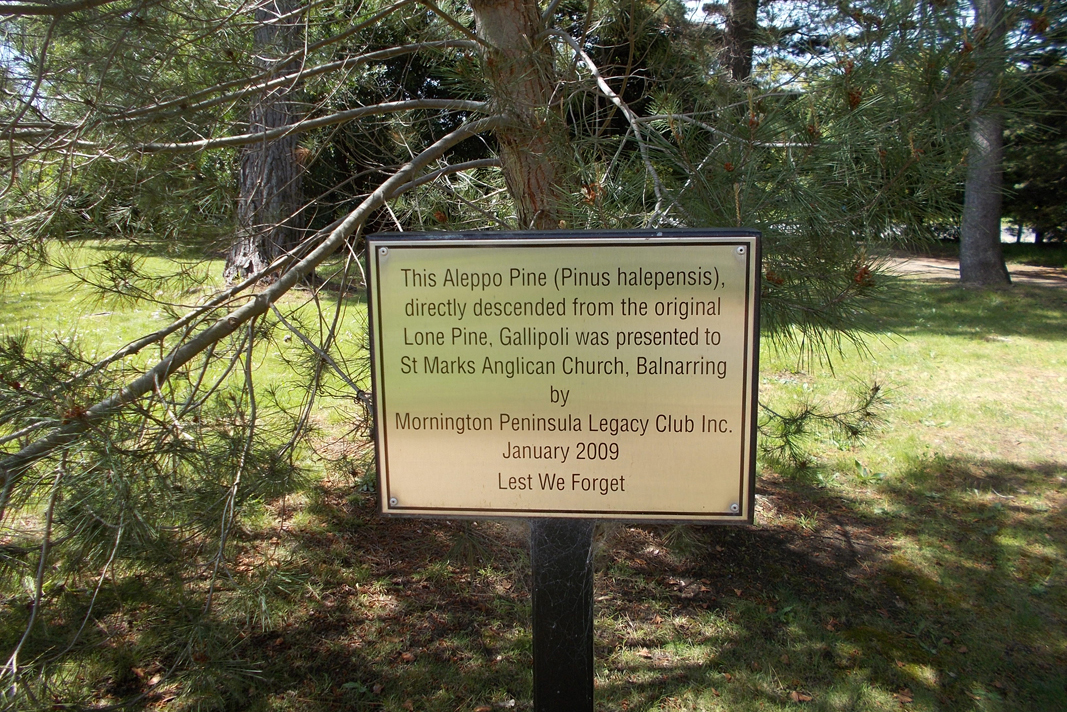
The lone pine plaque.
Joan Backhouse, a member of both the church and the historical society, took delivery of the seedling from Bill Burgess of Legacy. It was formally presented to the Church on January 25th, 2009 when a “Blessing of the Tree’ was held by the then vicar, the Reverend Jennifer Furphy. Joan tended the young pine until it could finally be planted in the church grounds. It grows there today, to the east of the building.
The original thirty-three trees planted in 1918 may or may not still be there. However, the trees that dwarf the church today, and which have been there for a very long time, do symbolize the years of World War I and the men from Balnarring who volunteered to fight.
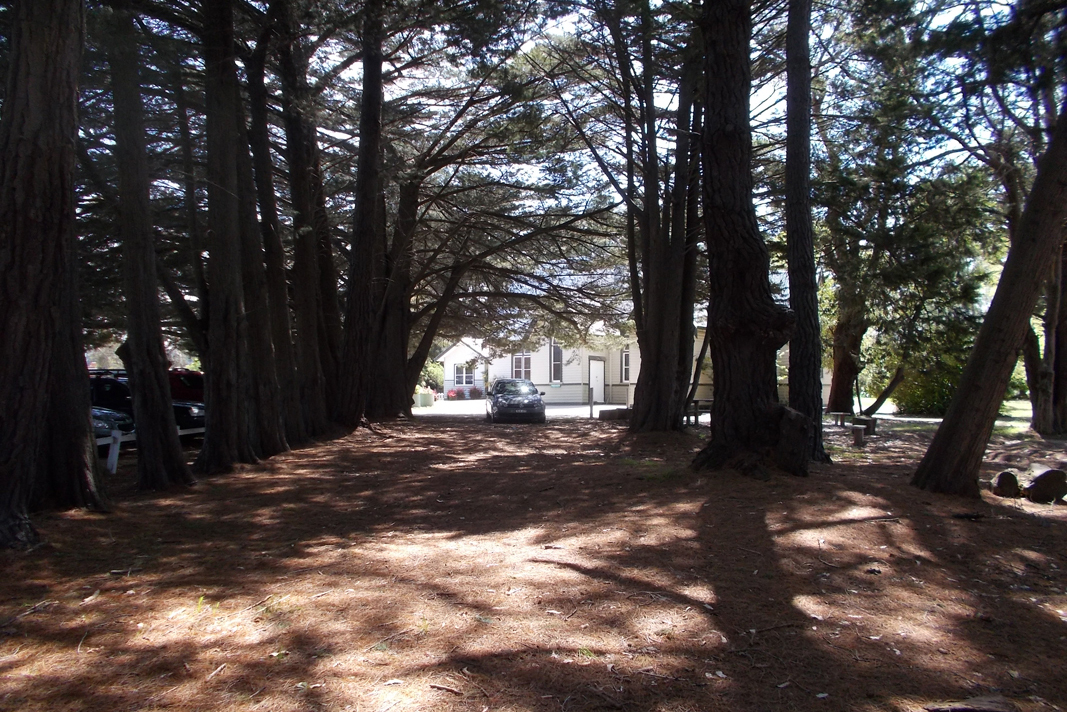
St Mark’s today with memorial trees.
References:
Minute Books of the Balnarring Progress Association
Phyllis Cole: Days to Remember
World War I Records
Photographs:
From the collection held by the Balnarring & District Historical Society





